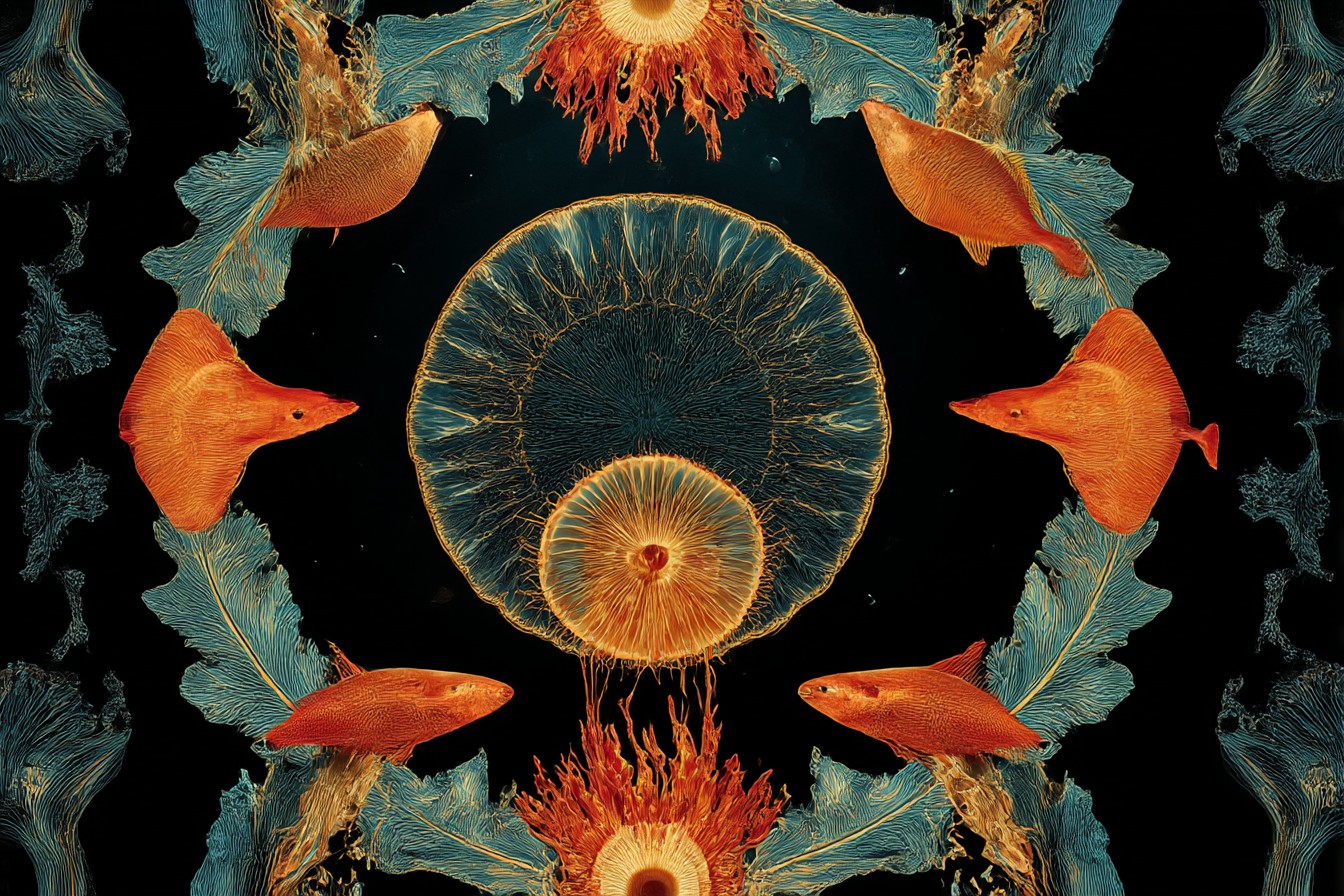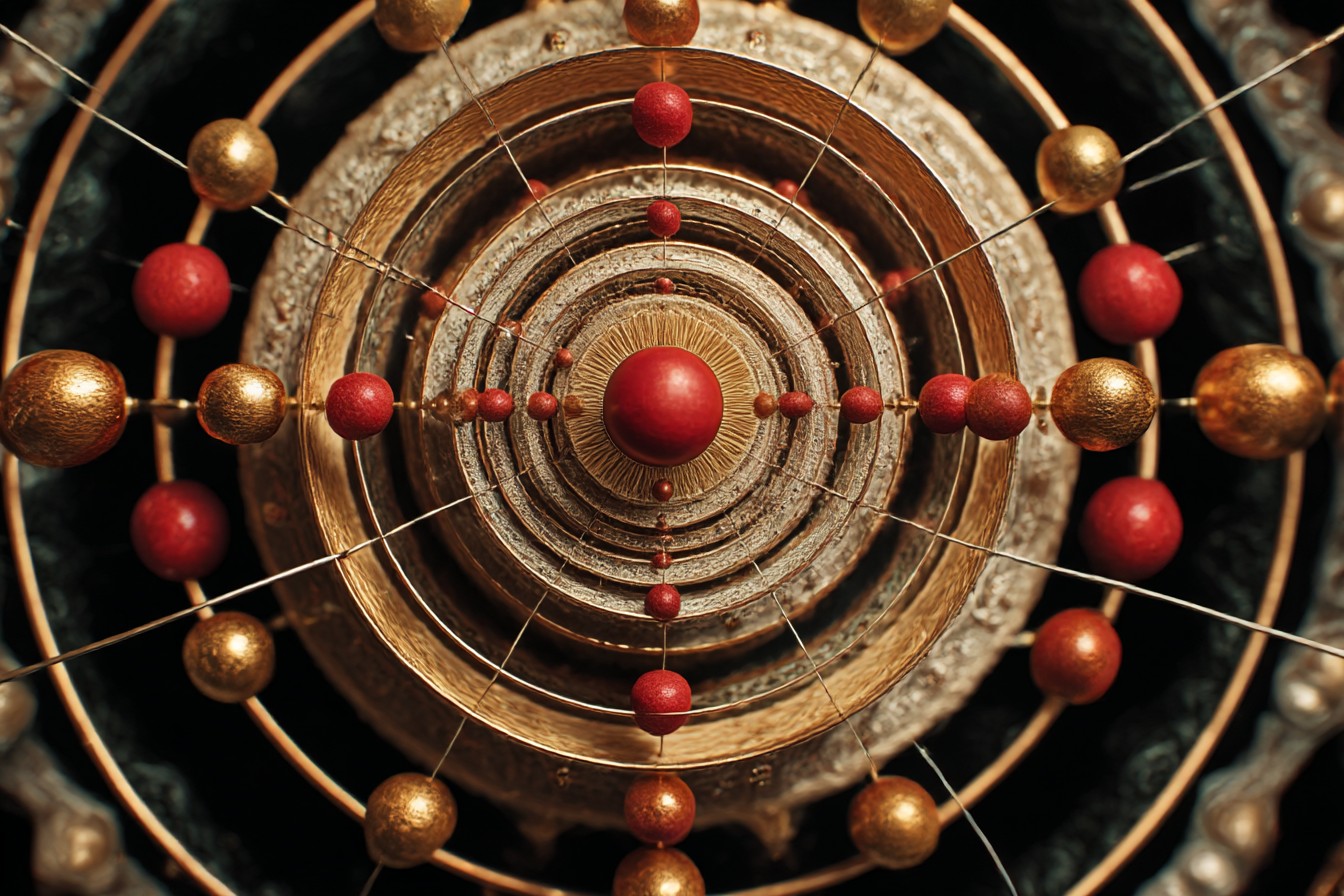It started with a careless comment at my brother’s wedding. His new mother-in-law—the type who reads self-help books exclusively and believes crystals can fix national debt—cornered me by the hors d’oeuvres.

“Jamie,” she said, examining me through narrowed eyes, “you’re carrying so much emotional baggage! I can practically see the weight of it bending space-time around you.”
Now look, I’m used to being psychoanalyzed at family functions (hazard of being perpetually single in your thirties while conducting experiments that occasionally require hazmat cleanup), but something about her pseudoscientific phrasing triggered the worst kind of scientific curiosity in me. What if emotional baggage actually had measurable mass? Could psychological weight be converted to physical energy?
I spent the rest of the reception scribbling calculations on cocktail napkins.

Three days later, I found myself in the physics department at MIT, sitting across from Dr. Eleanor Chen—Josh’s older sister and quantum physicist extraordinaire—who was staring at me with the familiar expression of someone wondering how I’ve survived this long without institutional supervision.
“You want me to… calculate the energy content of your emotional trauma?” she clarified, pinching the bridge of her nose.
“Emotional baggage,” I corrected. “And yes. Look, I know it sounds ridiculous, but there’s precedent. The brain consumes glucose to process emotions, right? Neurons firing, neurotransmitters releasing, all that requires energy. So theoretically, ongoing emotional processing—like, say, replaying that time I accidentally set my date’s hair on fire during what I thought was a romantic dinner chemistry demonstration—must have quantifiable energy requirements.”

Eleanor sighed. “That’s not how—”
“Plus,” I continued, sliding my notebook across her desk, “I’ve already worked out some preliminary calculations based on established metabolic brain function data. I just need you to verify the quantum aspects.”
She glanced at my notes, then did a double-take. “Jamie, did you seriously attempt to calculate the Planck constant of your commitment issues?”

“It seemed like a logical starting point.”
What followed was a four-hour session that began with Eleanor explaining why my approach was fundamentally flawed and ended with both of us hunched over a whiteboard, surrounded by empty coffee cups, deriving what we began calling the Maxwell-Chen Emotional Energy Equivalence Principle.
The basic methodology we developed was surprisingly coherent. First, we established baseline parameters:

1. Average human brain consumes approximately 20 watts of power
2. Emotional processing recruits specific neural networks (primarily limbic system)
3. Persistent emotional patterns create reinforced neural pathways
4. Each emotion has different metabolic signatures
From there, things got complicated. Eleanor insisted we factor in quantum uncertainty principles—after all, emotions aren’t fixed states but probability clouds of potential feelings that collapse into specific states when observed (like when Mei asks if I’m upset about something and suddenly I AM upset even though I wasn’t before she asked).
“The observer effect is significant,” Eleanor muttered, scribbling equations. “Your emotional state exists in superposition until someone asks about it at a family dinner.”

I created a detailed inventory of my personal emotional baggage, categorized by:
– Romantic catastrophes (37% of total, primarily consisting of the infamous “Chemistry Lab First Date Disaster Series” spanning 2014-2022)
– Academic failures (22%, heavily weighted toward my disastrous thesis defense where I accidentally created a small exothermic reaction that singed my advisor’s eyebrows)
– Childhood incidents (19%, dominated by The Great Hydrogen Peroxide Incident and subsequent garden shed reconstruction costs)
– Existential dread (15%, primarily related to climate change and whether my kitchen experiments might accidentally create a superbug)
– Miscellaneous regrets (7%, including but not limited to that haircut in 2016 that made me look like I’d lost a fight with a lawn mower)
For each category, we calculated the approximate number of memory recall events per month, average duration of rumination, and intensity of emotional response on a scale I developed that measures physiological markers from 1 (“mild discomfort, slight increase in heart rate”) to 10 (“full cortisol flood, might need to lie down on the floor for a while”).

The mathematical model grew increasingly complex. Eleanor insisted on incorporating quantum field theory to account for how emotional states interact with external environments. She demonstrated mathematically how my anxiety about being late actually warps my perception of time, creating a self-fulfilling probability loop.
“It’s fascinating,” she said around midnight, eyes bloodshot but excited. “If we model your emotional responses as wave functions rather than particles, we can actually predict the interference patterns they create in your decision-making processes.”
I was starting to regret my entire premise. “So what’s the bottom line? How many kilojoules of energy am I lugging around in my psychological suitcase?”

Eleanor stepped back from our whiteboard—now covered in a terrifying blend of quantum field equations, neurobiology references, and a strangely detailed diagram of my amygdala’s response to dating app notifications.
“According to our calculations,” she said slowly, “the sustained emotional baggage you’re carrying requires approximately 1.7 megajoules of metabolic energy annually just for maintenance.”
I blinked. “That’s… a lot?”

“Put it this way,” she explained, “that’s roughly equivalent to the kinetic energy of a 2000 kg car moving at about 41 km/h. You’re essentially pushing a medium-sized sedan up a hill with your brain. Constantly.”
Well. That explained the fatigue.
But here’s where things got genuinely interesting. As Eleanor and I refined our model over the following weeks (yes, this became an actual side project complete with spreadsheets and a dedicated Slack channel), we discovered something remarkable about emotional energy: it follows surprisingly consistent thermodynamic principles.

The First Law of Emotional Thermodynamics: Emotional energy cannot be created or destroyed, only transformed or transferred. When I “let go” of something, that energy doesn’t disappear—it converts into different forms or shifts to other people. That sarcastic comment I made to the barista who got my order wrong? Energy transfer. The lingering resentment I felt afterward? Conversion.
The Second Law of Emotional Thermodynamics: Emotional entropy always increases over time without intervention. Left unaddressed, emotional baggage doesn’t just maintain—it grows more chaotic. Those unresolved feelings about my ex spreading rumors about my “concerning” homemade fermentation experiments don’t just sit there in neat little packages—they fragment, contaminate unrelated emotional states, and generally increase the disorder of my entire psychological system.
We even identified an emotional equivalent of thermal conductivity—some people (like Mei) have high emotional conductance, absorbing and dissipating feelings efficiently. Others (like me) are emotional insulators, trapping energy internally until pressure reaches critical levels and results in what my friends delicately term “one of Jamie’s episodes.”

The experiment took an unexpected turn when Eleanor suggested quantifying the energy release of actually processing emotions properly. We designed a protocol involving meditation, structured journaling, and monitored therapy sessions with a psychologist friend who owed me a favor after I helped remove some questionable mold growth from her office humidifier.
The results were startling. Properly processing even a single significant emotional event released measurable energy—manifesting as improved sleep quality, reduced stress biomarkers, and what Eleanor called “quantum realignment of baseline emotional states.” In one particularly successful session focused on my lingering shame about accidentally creating a minor lab evacuation during my postdoc, I experienced an energy release equivalent to approximately 25,000 joules.
“You could have boiled water for tea with that emotional processing,” Eleanor noted.

My girlfriend Mei found the whole project both amusing and concerning. “Only you,” she said, watching me attach the modified EEG sensors before a session designed to address my anxiety about our relationship, “would turn emotional growth into a physics experiment.”
“The data doesn’t lie,” I replied, adjusting the electrodes. “According to last week’s measurements, talking about my fear of commitment reduced my autonomic nervous system activation by 47%. That’s progress!”
“Hmm,” she said, eyeing the equipment skeptically. “And the fact that you’re measuring your emotional growth in voltage differentials rather than, I don’t know, actually feeling better?”
She had a point. In typical fashion, I’d become so obsessed with quantifying the energy of emotional baggage that I’d nearly missed the actual purpose of addressing it. The irony wasn’t lost on me that I’d created a new form of emotional baggage about emotional baggage.
The final calculations from our project were illuminating, if somewhat existentially terrifying. By our most conservative estimates, the average human carries emotional energy equivalent to approximately 400,000 joules at any given time—enough to power a 100-watt light bulb for about an hour. Collectively, humanity’s unprocessed emotional baggage contains roughly the same energy as 30 metric tons of TNT.
Honestly, that explains a lot about current events.
I never expected a random comment at a wedding to lead me down a quantum rabbit hole of emotional energetics, but that’s science for you—the best questions come from the strangest places. Dr. Chen and I are currently drafting a paper for publication in an interdisciplinary journal, though I suspect the review process will be… interesting.
As for my personal baggage? I’ve managed to reduce my emotional energy burden by approximately 22% through our experimental protocols. My car analogy has downgraded from a sedan to a compact. It’s progress.
Sometimes the most valuable scientific insight comes not from successful experiments but from the moments when your methodology forces you to confront unexpected truths. In trying to quantify my emotional baggage, I discovered something no equation could capture—the simple relief of taking it seriously enough to measure in the first place.
Though I’m still avoiding my brother’s mother-in-law at family gatherings. Some energy exchanges simply aren’t worth the quantum fluctuations they create in the wedding photo retakes.
Leave a Reply